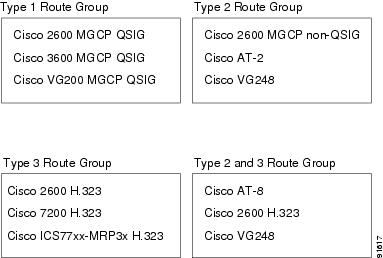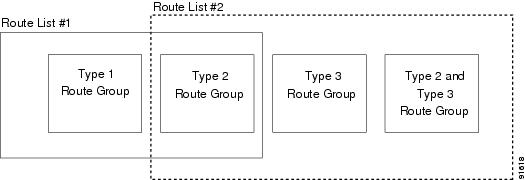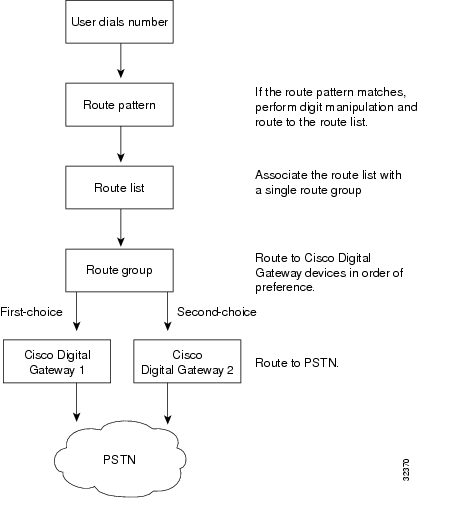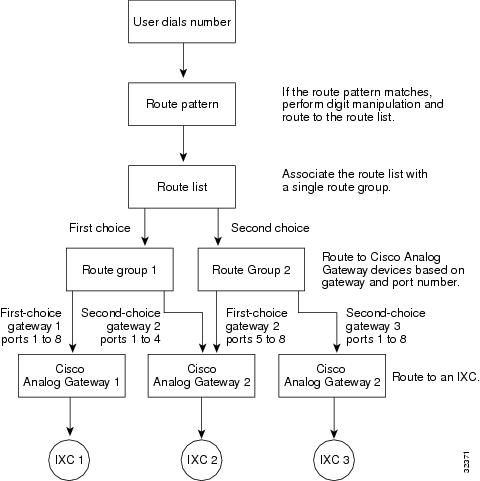

-
Cisco CallManager System Guide, Release 3.3(3)
-
Index
-
Preface
-
Introduction
-
Cisco IP Telephony Overview
-
System Configuration Overview
-
System-Level Configuration Settings
-
Clustering
-
Redundancy
-
Call Admission Control
-
Cisco TFTP
-
Device Support
-
Services
-
Auto-Registration
-
Partitions and Calling Search Spaces
-
Understanding Route Plans
-
Understanding the LDAP Directory
-
Managing User Directory Information
-
Media Resource Management
-
Conference Bridges
-
Transcoders
-
Music On Hold
-
Media Termination Points
-
Cisco Catalyst DSP Resources for Transcoding and Conferencing
-
Voice Mail Connectivity to Cisco CallManager
-
SMDI Voice Mail Integration
-
Cisco Unity Messaging Integration
-
Cisco uOne Voice Messaging Integration
-
Cisco DPA Integration
-
Call Park
-
Call Pickup and Group Call Pickup
-
Cisco IP Phone Services
-
Cisco CallManager Extension Mobility and Phone Login Features
-
Cisco CallManager Attendant Console
-
Custom Phone Rings
-
Cisco IP Manager Assistant
-
Understanding Voice Gateways
-
Cisco IP Phones
-
Computer Telephony Integration
-
Cisco ATA 186
-
Administrative Tools Overview
-
Administrative Accounts and Passwords
-
Table Of Contents
Where to Find More Information
Understanding Route Plans
The Route Plan drop-down list on the menu bar allows you to configure Cisco CallManager route plans by using route patterns, route filters, route lists, and route groups.
This section contains descriptions of the following route plan concepts:
•
Where to Find More Information
Route Plan Overview
Cisco CallManager uses route plans to route internal and external, public switched telephone network (PSTN) calls.
Route patterns, route filters, route lists, and route groups provide flexibility in network design. Route patterns work in conjunction with route filters to direct calls to specific devices and to include or exclude specific digit patterns. Use route patterns to include and exclude digit patterns. Use route filters primarily to include digit patterns. Route lists control the selection order of the route groups. Route groups set the selection order of the gateway devices.
You can assign route patterns to gateways or to a route list that contains one or more route groups. Route groups determine the order of preference for gateway and port usage. Route groups allow overflows from busy or failed devices to alternate devices.
Route lists determine the order of preference for route group usage. If a route list is configured, you must configure at least one route group. One or more route lists can point to one or more route groups.
Route filters may restrict certain numbers that are otherwise allowed by a route pattern from being routed. Tags, or clauses, provide the core component of route filters. A tag applies a name to a portion of the dialed digits. For example, the North American Numbering Plan (NANP) number 972-555-1234 contains the LOCAL-AREA-CODE (972), OFFICE-CODE (555), and SUBSCRIBER (1234) tags.
Note
The NANP designates the numbering plan for the PSTN in the United States and its territories, Canada, Bermuda, and many Caribbean nations. It includes any number that can be dialed and is recognized in North America.
Route patterns represent all valid digit strings. When you assign a directory number to a Cisco IP Phone, you assign it a route pattern (the directory number is the route pattern). Cisco Analog Access Trunk Gateways, Cisco Digital Access Trunk Gateways, Cisco MGCP gateways, and H.323-compliant gateways also use route patterns. Cisco gateways can route ranges of numbers with complex restrictions and manipulate directory numbers before the Cisco CallManager passes them on to an adjacent system. The adjacent system can be a central office (CO), a private branch exchange (PBX), or a gateway on another Cisco CallManager system.
Route Groups and Route Lists
Route Groups contain one or more gateways, and route lists contain one or more route groups. Cisco CallManager restricts the gateways that you can include in the same route group and the route groups you can include in the same route list. For the purpose of route group and route list restrictions, Cisco CallManager divides gateways into three types:
•
Type 1—MGCP QSIG gateways
•
Type 2—MGCP non-QSIG, Skinny, and T1-CAS gateways
•
Type 3—H.225 and H.323 gateways
You can create route groups with Type 1 gateways only, Type 2 gateways only, Type 3 gateways only, or a combination of Type 2 and Type 3 gateways. You cannot combine Type 1 gateways with any other type of gateway in a route group.
Figure 13-1 provides examples of valid route groups.
Figure 13-1 Valid Route Groups Example
Cisco CallManager does not allow you to add route groups that contain gateways that use the H.323 or H.225 protocol (Type 3) and route groups that contain MGCP gateways that use a QSIG protocol (Type 1) to the same route list. You can create route lists with any combination of Type 1 route groups and Type 2 route groups as well as with any combination of Type 2 route groups and Type 3 route groups, as illustrated in Figure 13-2.
Figure 13-2 Valid Route Lists Example
For more information on creating route groups, refer to the "Adding a Route Group" section in the Cisco CallManager Administration Guide. For more information on creating route lists, refer to the "Adding a Route List" section in the Cisco CallManager Administration Guide.
Route Patterns Overview
You can assign a route pattern directly to a Cisco Access Gateway, or you can assign it to a route list for more flexibility. For example, Figure 13-3 shows Cisco Digital Access Gateway 1 designated as the first choice for routing outgoing calls to the PSTN when a matching route pattern is dialed.
Tip
If a gateway does not have a route pattern, it cannot place calls to the PSTN or to a PBX. To assign a route pattern to an individual port on a gateway, you must assign a route list and a route group to that port.
Note
A gateway port can belong to only one route group; however, a route group can be assigned to multiple route lists.
Figure 13-3 shows the effects of using route patterns with Cisco Digital Access Gateways. This example assigns the route pattern to a route list, and that route list associates with a single route group. The route group supports a list of devices that are selected based on availability. If all ports on the first-choice gateway are busy or out of service, the call routes to the second-choice gateway.
Note
If a route pattern is associated with a gateway, then if all the resources of that gateway are used, the call does not get routed.
Figure 13-3 Route Plan Summary Diagram for Cisco Digital Access Gateways
Figure 13-4 shows the effects of using route patterns with Cisco Analog Access Gateways. This example assigns the route pattern to a route list, and that route list associates with two route groups. Route group 1 associates with ports 1 through 8 on gateway 1, which routes all calls to interexchange carrier 1 (IXC 1). Route group 1 also associates with ports 1 through 4 on gateway 2. Route group 2 associates with ports 5 through 8 on gateway 2 and all ports on gateway 3.
Each route group supports a list of devices that are selected based on availability. For route group 1, if ports 1 through 8 on the first-choice gateway are busy or out of service, calls route to ports 1 through 4 on the second-choice gateway. If all routes in route group 1 are unavailable, calls route to route group 2. For route group 2, if ports 5 through 8 on the first-choice gateway are busy or out of service, calls route to ports 1 through 8 on the second-choice gateway. If no ports on any gateway in either route group are available, the call routes to an all trunks busy tone.
Figure 13-4 Route Plan Summary Diagram for Cisco Analog Access Gateways
Route Pattern Wildcards and Special Characters
Route pattern wildcards and special characters allow a single route pattern to match a range of numbers (addresses). Also use these wildcards and special characters to build instructions that enable the Cisco CallManager to manipulate a number before sending it to an adjacent system.
The "Special Characters and Settings" chapter in the Cisco CallManager Administration Guide describes the wildcards and special characters that are supported by Cisco CallManager.
Closest Match Routing
Closest match routing process routes a call by using the route pattern that most closely matches the dialed number. When the Cisco CallManager encounters a dialed number that matches multiple route patterns, it uses closest match routing to determine which route pattern most closely matches the number and directs the call by using that route pattern.
When two configured route patterns exactly match the same number of addresses in different partitions, Cisco CallManager chooses the route pattern based on the order in which the partitions are listed in the calling search space. (Cisco CallManager chooses the route pattern from the partition that appears first in the calling search space.)
If two configured route patterns exactly match the same number of addresses in a partition, the Cisco CallManager arbitrarily chooses one. The following paragraphs explain why such exact matches signify an unusual occurrence.
Several route patterns can match a single number. For instance, the number 8912 matches all the following route patterns: 8912, 89XX, and 8XXX.
In this example, the route pattern 8912 matches exactly one address. The route pattern 89XX matches 8912 plus 99 other addresses, and the route pattern 8XXX matches 8912 plus 999 other addresses.
If the user dials 8913, the call routes differently. Using the preceding example, this address matches only the routing patterns 89XX and 8XXX. Because 89XX matches a narrower range of addresses than 8XXX, the Cisco CallManager delivers the call to the device that is assigned the routing pattern 89XX.
Using the @ wildcard character in a route pattern requires additional consideration.
The number 92578912 matches both of the following route patterns: 9.@ and 9.XXXXXXX. Even though both these route patterns seem to equally match the address, the 9.@ route pattern actually provides the closest match. The @ wildcard character encompasses many different route patterns, and one of those route patterns is [2-9][02-9]XXXXX. Because the number 2578912 more closely matches [2-9][02-9]XXXXX than it does XXXXXXX, the 9.@ route pattern provides the closest match for routing.
Discard Digits Instructions
A discard digits instruction (DDI) removes a portion of the dialed digit string before passing the number on to the adjacent system. Portions of the digit string must be removed, for example, when an external access code is needed to route the call to the PSTN, but the PSTN switch does not expect that access code.
The "Special Characters and Settings" chapter in the Cisco CallManager Administration Guide lists DDIs and describes the effects of applying each DDI to a dialed number.
Route Patterns
Cisco CallManager uses route patterns to route or block both internal and external calls. A directory number specifies a type of specific route pattern that is applied to a Cisco IP Phone. Gateways and Cisco IP Phones can also use more complex route patterns that can contain wildcards.
Updates to route patterns automatically reset the associated gateway and route list.
CautionIf a gateway has no route pattern associated with it, or it does not belong to a route group, it cannot route any calls.
The simplest route pattern just specifies a set of one or more digits. For example, the number 8912 specifies a route pattern. When assigned to a Cisco Access gateway or a route list, the Cisco CallManager directs any calls to 8912 to the assigned device.
You can use route patterns to invoke network-specific services/facilities on a call-by-call basis by configuring the fields in the ISDN Network-Specific Facilities Information Element section on the Route Pattern Configuration window. Cisco CallManager uses the network-specific services/facilities when the user dials the route pattern.
Note
Cisco CallManager only uses the network-specific information with PRI protocol gateways. H.323 gateways do not support network-specific facilities.
Cisco CallManager codes the bearer capability as Speech for the ACCUNET service.Considerations for Using Route Patterns
When using route patterns, take the following considerations into account:
•
If the route pattern contains an at symbol (@), the Discard Digits field can specify any discard digits instructions (DDIs).
•
When @ is used in a routing pattern, the system recognizes octothorpe (#) automatically as an end-of-dialing character for international calls. For routing patterns that do not use @, you must include the # in the routing pattern to be able to use the # character to signal the end of dialing.
Note
The only Discard Digits instructions that you may use with non-@ patterns comprise <None>, NoDigits, and PreDot.
External Route Plan Wizard
The external route plan wizard generates a single-tenant, multilocation, partitioned route plan for the North American Numbering Plan (NANP) area by using information that is provided by the administrator through a series of prompts.
The route plan that the external route plan wizard generates includes the following elements:
•
Route filters
•
Route groups
•
Route lists
•
Route patterns
•
Partitions
•
Calling search spaces
•
Calling party and calling party transformations
•
Access code manipulation
The following topics describe the basic concepts that are used when you generate route plans with the external route plan wizard:
Generated Route Filters
A generated route filter permits or restricts access through a route list by using route patterns. The external route plan wizard associates each route list with a particular route filter. It names route filters by using the TenantLocationCalltype convention and appends the suffix RF to each route filter for easy identification.
Table 13-1 shows the seven types of route lists that use route filters. The table shows examples that use specific route filter names and actual access and area codes for better readability.
Generated Route Groups
A generated route group sets the order of preference for gateway and port usage. The external route plan wizard assigns one gateway to each generated route group. The wizard uses all ports on the gateways. It does not support using partial resources for generated external route plans.
The external route plan wizard names route filters by using the TenantLocationGatewayTypeNumber convention for easy identification. The following list shows the gateway type abbreviations:
•
AA: analog access
•
DA: digital access
•
HT: H.323 trunk
•
MS: MGCP station
•
MT: MGCP trunk
The external route plan wizard identifies route groups that are associated with multiple gateways of the same type by attaching a number suffix to all route groups. For example, if three MGCP trunk gateways exist at the Cisco Dallas location, the external route plan wizard names the associated route groups CiscoDallasMT1, CiscoDallasMT2, and CiscoDallasMT3.
If a route list includes more than one route group and more than one gateway (with one gateway for each route group), an arbitrary order designates how the external route plan wizard lists the route groups. The only order that is imposed ensures that route groups that are associated with the local gateways are listed before the route groups that are associated with remote gateways. If needed, manually change the order after the route plan is generated.
Note
Cisco CallManager treats all gateways that belong to a location as shared resources for that location.
Generated Route Lists
A generated route list sets the order of preference for route group usage and defines the route filters that are applied to those route groups. The external route plan wizard creates between five and seven route lists for each location depending on the types of local dialing choices that are available. Therefore, the total number of route lists depends on the local dialing scheme and the number of locations that the route plan serves.
Using the TenantLocationCalltype convention, the external route plan wizard names route lists and appends the suffix RL to each route list for easy identification.
Table 13-2 shows the eight types of route lists. The examples shown in this table use specific route list names for better readability.
Generated Route Patterns
A generated route pattern directs calls to specific devices and either includes or excludes specific dialed-digit strings. The external route plan wizard only generates route patterns that require an access code prefix. The typical route pattern for routing a call to the PSTN includes the prefix construction 9.@. The typical route pattern for routing a call to the PBX includes the prefix construction 9.9@.
The external route plan wizard associates a route list, a route filter, and a partition with each route pattern. The route pattern provides the appropriate calling party transform mask, called party transform mask, digit discard instructions, and prefix digits for the associated route list.
The wizard bases route patterns for calls to an adjacent PBX on the access code and the range of directory numbers that are served by that PBX. For example, if the access code that is used to direct calls to the adjacent PBX is 9 and the range of directory numbers that is served by that PBX is 1000 through 1999, the external route plan wizard generates the route pattern 9.1XXX for enterprise calls.
Route Plan Report
The route plan report comprises a listing of all call park numbers, call pickup numbers, conference numbers (Meet-Me numbers), route patterns, translation patterns, voice-mail ports, message-waiting indicators, and attendant console numbers in the system. The route plan report allows you to view either a partial or full list and to go directly to the associated configuration windows by choosing a route pattern, partition, route group, route list, call park number, call pickup number, conference number (Meet-Me number), or gateway.
In addition, the route plan report allows you to save report data into a .csv file that you can import into other applications such as the Bulk Administration Tool (BAT). The .csv file contains more detailed information than the web pages, including directory numbers (DN) for phones, route patterns, and translation patterns. Refer to the "Route Plan Report" section in the Cisco CallManager Administration Guide for more information.
Dependency Records
To find out what phones, gateways, trunks, media resource groups, and media resource lists that a specific media resource group or media resource list is using, click the Dependency Records link that is provided on the Cisco CallManager Administration Media Resource Group and Media Resource Group Lists Configuration windows. The Dependency Records Summary window displays information about the media resource group or media resource group list. For more information, click the record that displays in the Dependency Records Summary window, and the Dependency Records Details window displays.
For more information about Dependency Records, refer to Accessing Dependency Records, Deleting a Media Resource Group List, and Deleting a Media Resource Group in the Cisco CallManager Administration Guide.
Where to Find More Information
Related Topic
•
Partitions and Calling Search Spaces
Related Cisco Documentation
•
Partition Configuration, Cisco CallManager Administration Guide
•
Calling Search Space Configuration, Cisco CallManager Administration Guide
•
Cisco IP Telephony Network Design Guide

 Feedback
Feedback





